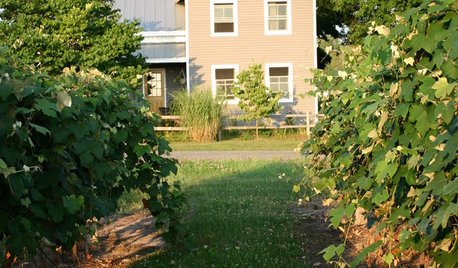Herbs for infected wounds
Maggie_J
19 years ago
Related Stories

SOUTHEAST GARDENINGSoutheast Gardener's April Checklist
Stock up on herbs, keep clippers away from the daffodils and watch for signs of a major impatiens threat
Full Story
GARDENING GUIDESEvocative Plants to Awaken All the Senses
Slip into a garden wonderland that brings more than mere visual delight, by including these grasses, flowers and herbs
Full Story
GARDENING GUIDESVegetables and Flowers Mix in Beautiful Edible Gardens
Ornamentals, meet your edible garden mates. We know you'll get along just beautifully
Full Story
LANDSCAPE DESIGNHow to Create a Cottage-Style Garden
If you like an abundance of plants — and visits from birds, bees and butterflies — this may be the style of yard for you
Full Story
MOST POPULAR7 Ways to Design Your Kitchen to Help You Lose Weight
In his new book, Slim by Design, eating-behavior expert Brian Wansink shows us how to get our kitchens working better
Full Story
FEEL-GOOD HOME10 Ways to Fight Pollen at Home
Keep sneezing and stuffiness to a minimum by making your house as pollen free as possible
Full Story
HEALTHY HOME16 Ideas for a Healthy, Feel-Good Home
Making these small tweaks and bigger shifts at home can help you thrive everywhere you go
Full Story
KITCHEN DESIGN10 Ways to Add Personality to Your Kitchen
Quirky little details, unexpected ingredients and smart styling help give a kitchen its own identity
Full Story
GARDENING AND LANDSCAPINGWorld of Design: 10 Home Gardeners Show Us Their Sweet Summer Harvests
From New York to Tokyo, these gardeners have turned their yards, terraces and rooftops into places of bounty
Full Story






Heathen1
bushpoet
Related Professionals
Maple Valley Landscape Architects & Landscape Designers · Milwaukee Landscape Architects & Landscape Designers · Zion Landscape Architects & Landscape Designers · Clayton Landscape Contractors · Englewood Landscape Contractors · Fort Mill Landscape Contractors · Kailua Landscape Contractors · Seminole Landscape Contractors · Soddy Daisy Landscape Contractors · Streamwood Landscape Contractors · Forest Hill Landscape Contractors · Ferguson Landscape Contractors · Carlsbad Carpenters · Round Rock Carpenters · Santa Fe Roofing & GuttersMaggie_JOriginal Author
moonwolf23
moonwolf23
Maggie_JOriginal Author
franc
herbalbetty
JMC1
Judy_B_ON
ltcollins1949
vetivert8
Maggie_JOriginal Author
marie_in_wa
Maggie_JOriginal Author
ltcollins1949
esoterica
Maggie_JOriginal Author
esoterica
mayura97
thorspippi
marie_in_wa
Maggie_JOriginal Author
kevin_nsw
herbman
lazy_gardens
Maggie_JOriginal Author
franc
herbman
franc
EireannE
lazy_gardens
Maggie_JOriginal Author
herbalistic